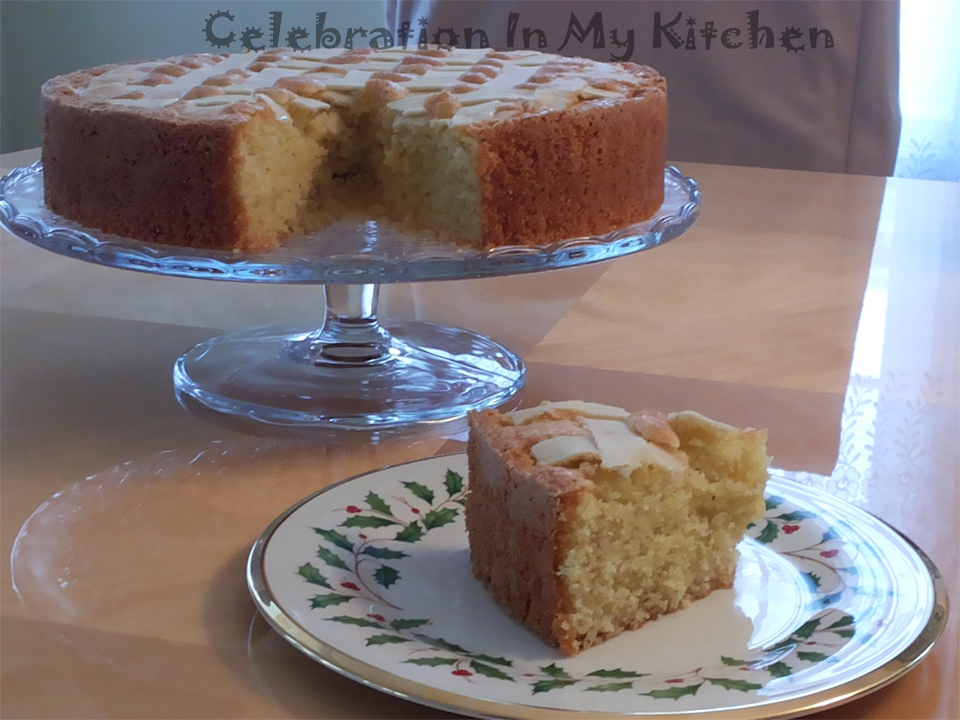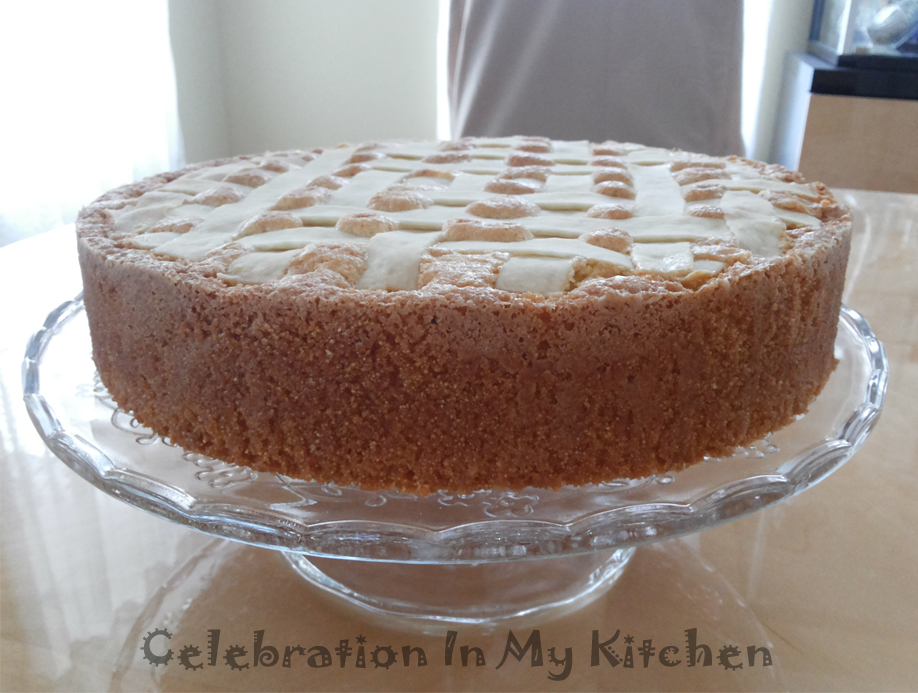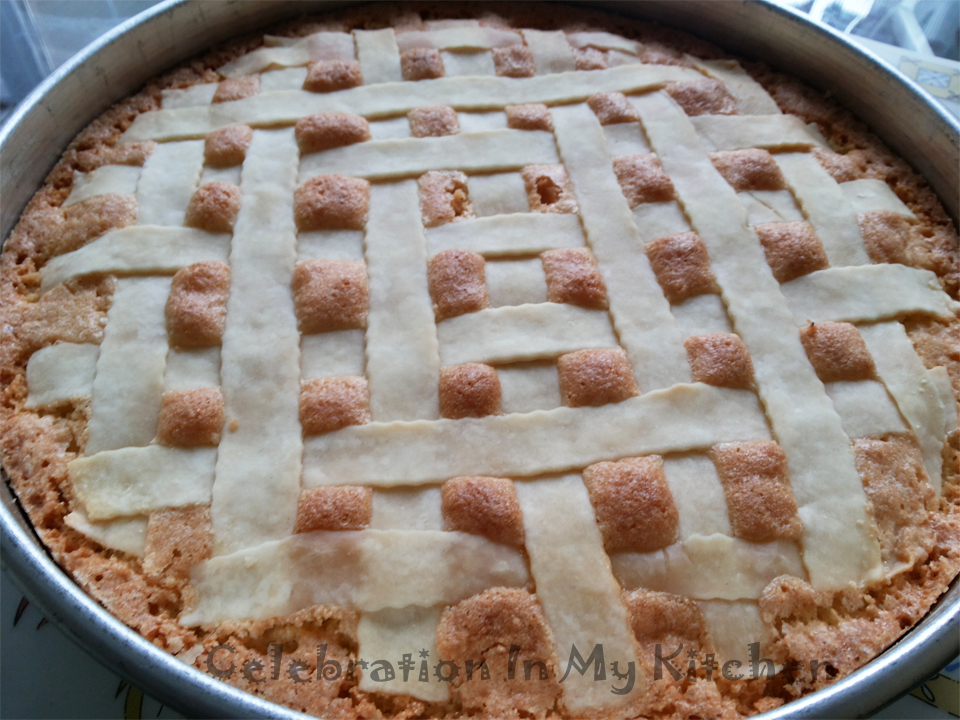Fresh or desiccated coconut can be used which is ground in a food processor till it resembles fine crumbs. Do not grind to a paste with rose essence or water. I have done this in the past and it took me several attempts to get the recipe right. Resting the batter for 8 hours or overnight is crucial to achieve a fluffy crumbly texture. This is my favourite cake as it is moist (not dry) with the right sweetness, has a perfect balance of coconut and semolina with a hint of flavour from the spices. A real tea time delight.
The cake batter is usually enclosed in a short crust pastry at the bottom and sides, topped with lattice strips and then baked. Though some do like to bake the batter in a short crust pastry, like my mother, I prefer to bake it only with the lattice top. Greasing the cake pan well and lining with parchment paper will ensure easy removal. This cake can be baked in a round or square pan. When baking in a round pan, I line only the bottom with parchment paper unlike the square pan that is covered entirely for easy lift and cutting. Baking at a low temperature of 300 F or 150 C ensures that the cake cooks evenly first from the interior with the heat making its way slowly to the outside, browning it beautifully. Here's something to keep in mind; cakes are usually baked at 350 F or 180 C but dense cakes like baath and fruit cakes should be baked at a slightly lower temperature at 300 F or 150 C for moist results.
(Serves 10)
You will need a 10” round cake pan or a 9” x 9” square pan
Ingredients:
1 cup butter (softened)
2 cups sugar
2 cups semolina (rava)
6 large eggs
4 cups fresh grated coconut or unsweetened desiccated coconut
1 teaspoon vanilla extract
1/2 teaspoon baking powder
1/4 teaspoon cardamom powder
1/4 teaspoon nutmeg powder
few drops of yellow food colour (liquid)
Method:
You will need two large coconuts to get 4 cups of coconut. When grating fresh coconut, use only the white flesh avoiding the brown skin. Grind in a food processor (without any liquid) till it resembles fine crumbs.
Using a stand mixer or with an electric beater, first beat the butter and then add sugar. When sugar is well incorporated, add eggs one at a time. Alternate with semolina and coconut followed by vanilla extract, baking powder, cardamom powder, nutmeg powder and finally the colour. With a spatula, give a nice good stir. Cover bowl with a plastic wrap and leave overnight to rest in a cool place.
Next morning, preheat oven to 300 F or 150 C.
Grease and line the cake pan with parchment paper. For a round cake pan, line only the bottom with parchment paper whereas for a square one, line the bottom and sides (for easy removal and to prevent it from cracking when unmoulding).
Transfer batter into the prepared pan. Top with strips of pastry to form a lattice. (Recipe for pastry indicated below.)
Place cake pan on the centre rack of the oven. Bake till light golden brown and a cake tester or a toothpick inserted in the centre comes out clean, around 1 hour.
Cool completely before cutting into pieces.
Pastry for lattice
Ingredients:
1 cup all purpose flour or maida
1 tablespoon butter or ghee
1/2 cup cold water
Method:
In a bowl, add the flour and using your fingertips, mix in the butter or ghee till it resembles fine crumbs. Then add water and form a stiff dough.
Roll out thinly on a lightly floured surface. Cut into 1/2” strips. Use the strips to decorate the top of the cake to form a lattice.






